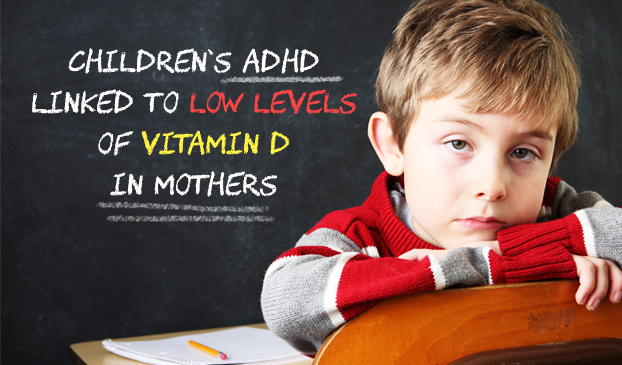To reduce your child’s risk of developing ADHD, mothers should expose themselves to sunlight on a regular basis while pregnant. If that’s not possible, taking at least 5,000 IU/day of vitamin D can also have a significant impact on your child’s long-term health.
ADHD is a controversial disease. As the frequency in which doctors are diagnosing young children with ADHD continues to increase over time, many parents are wondering why.
Background
ADHD stands for Attention Deficit Hyperactive Disorder, which is most commonly described as the lack of ability to focus and pay attention. Other symptoms of the disorder include hyperactivity, impulsiveness, constant talking, restlessness and a lack of inhibition.
ADHD diagnosis in children currently ranges from about 1 percent to 8 percent, depending on the criteria. Some skeptical parents question whether doctors are overprescribing ADHD drugs to the nation’s children in order to feed the medical moneymaking scheme, while others are wondering if there are certain factors that are causing children to become more likely to develop the disorder.
What new science says
Researchers are now theorizing mothers who experience low levels of vitamin D exposure during pregnancy can have an increased risk of having children who develop ADHD. A recent study of 1,650 four-year-old children conducted by Dr. Eva Morales indicated this to be true.
Less than 20 ng/ml is considered to be vitamin D deficient and 20–29.99 ng/ml is ruled as insufficient. In the study, 19 percent of mothers were vitamin D deficient and 33 percent of mothers had an insufficient amount of vitamin D. In addition, 48 percent of mothers had levels above 30 ng/ml. The children with ADHD in the study ranged from 2 percent to 7 percent.
Although unclear, the findings indicate that mothers with 40 to 50 ng/ml of vitamin D present in their bodies had children with an average of no ADHD symptoms.
Attention-deficit/hyperactivity disorder
Children diagnosed with the disorder have a harder time following directions and learning in a classroom environment. First discovered in the 1920s, ADHD has been treated by supervised doses of drugs that stimulate the body. After taking an amphetamines like Ritalin or Adderall, a drastic change is visible in children who were bouncing off the walls prior to taking these drugs. Currently, 6 percent of our nation’s children are taking amphetamines.
What mothers can do
We exist in a society where our children are being over-medicalized, but there are steps that can be taken to help prevent disease. To reduce your child’s risk of developing ADHD, mothers should expose themselves to sunlight on a regular basis while pregnant. If that’s not possible, taking at least 5,000 IU/day of vitamin D can also have a significant impact on your child’s long-term health.
CitizensReport
Latest posts by CitizensReport (see all)
- 4 Natural Alternatives To Energy Drinks That Will Make You Feel Healthier - February 19, 2018
- NBC Nightly News Publishes Expose On IVC Filters - February 18, 2018
- Good Sugar, Bad Sugar: Why You Should Eat More Fruit - February 16, 2018



Join the discussion